January 30, 2019
With a new charge from the BHE to build a strategic framework focused on closing equity gaps in Massachusetts public higher education, we begin with a closer look at current outcomes for one underserved yet rapidly growing population: Latino males.
In December 2018, the BHE voted to institute a new, top policy and performance priority for Massachusetts public higher education: Significantly raising the enrollment, attainment and long-term success outcomes among underrepresented student populations.
A key aspect of DHE’s work to build a strategic framework around this single equity priority is to identify the key populations across the Commonwealth whose outcomes differ significantly from the pleasing success story told by the state-level metrics. Indeed, Massachusetts’ standing on key education indicators at the state level is laudable—a nation-leading high school graduation rate, college enrollment rate and college attainment rate, as well as a respectable public system graduation rate:
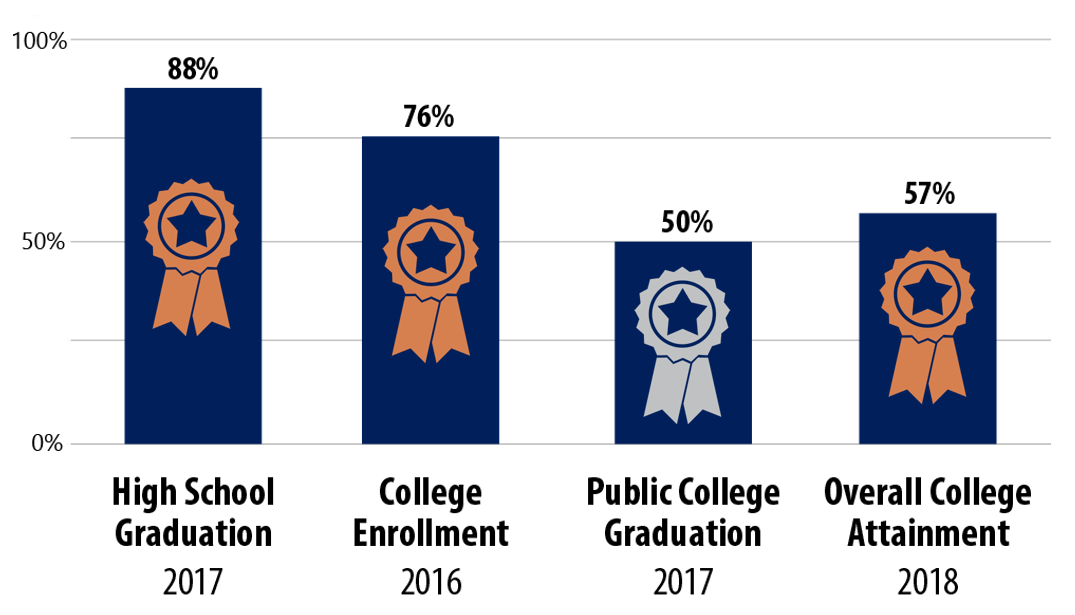
| High School Graduation Rate | Percentage of 9th graders in Massachusetts public high schools in 2013–14 who graduated high school by 2017. Source: DESE. |
|---|---|
| College Enrollment Rate | Percentage of 2016 Massachusetts public high school graduates who enrolled in college within 16 months after high school graduation. Source: DESE, National Student Clearinghouse. |
| Public System Graduation Rate | Percentage of first-time, degree-seeking students who initially enrolled at a Massachusetts public college or university in fall 2011 and graduated from any U.S. higher education institution by 2017. Source: DHE, National Student Clearinghouse. |
| Overall College Attainment Rate | Percentage of 2018 Massachusetts residents age 25-64 who possess a college degree (associate or higher). Source: Current Population Survey, U.S. Census Bureau. |
But a closer look at these key education indicators, broken out by the largest subgroups of race/ethnicity and gender in Massachusetts, reveal significant disparities:
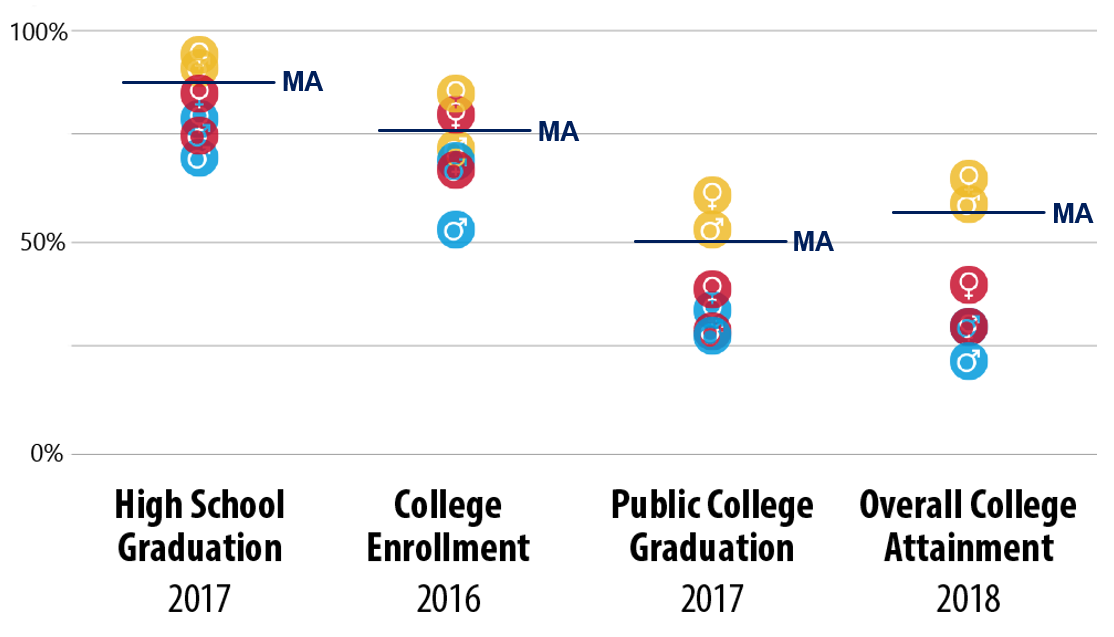

White females consistently rank at the top of their peers on these metrics:
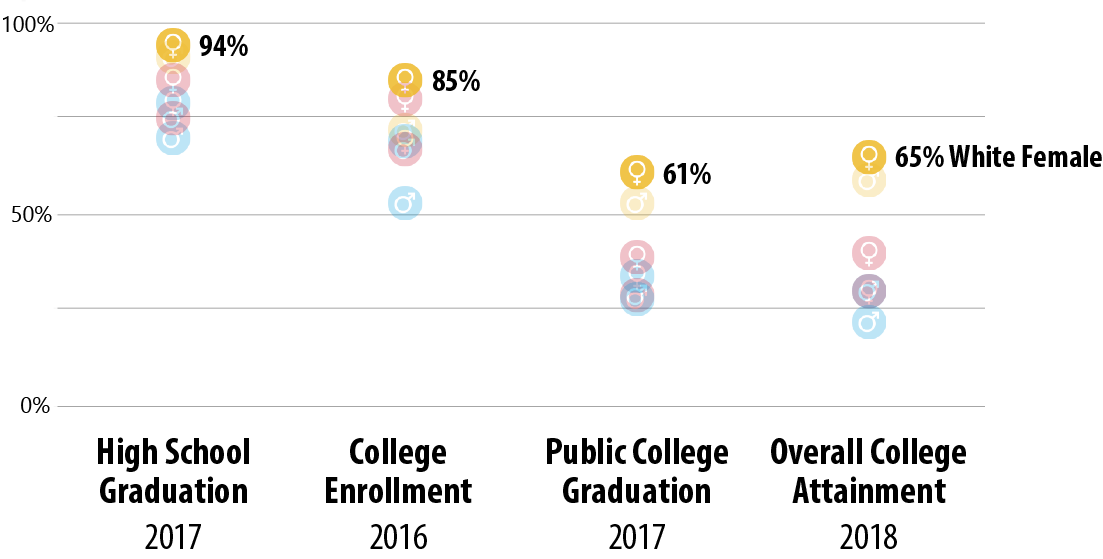
While Latino males consistently rank at the bottom:
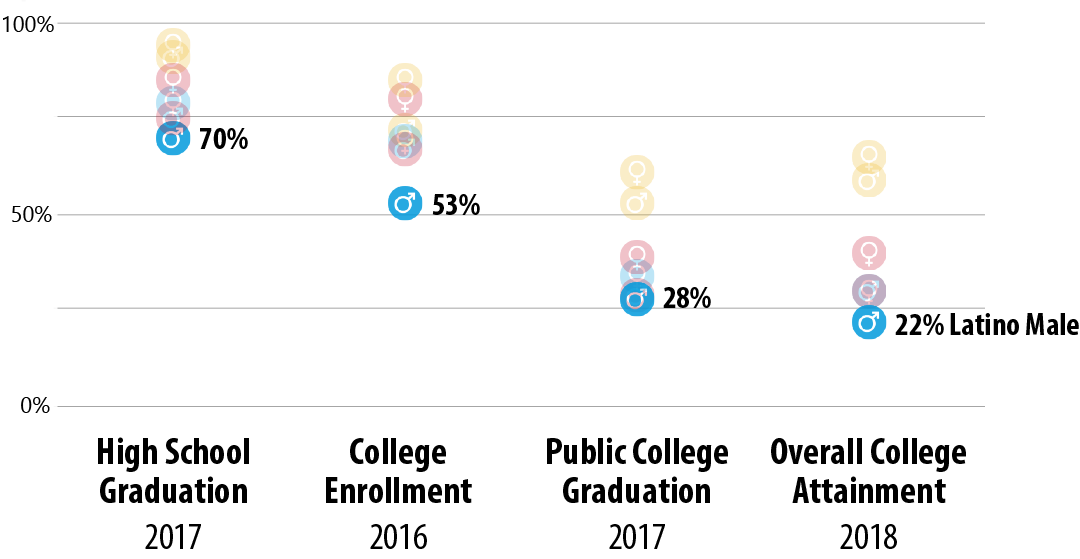
The gaps between these two populations are large, with Latino males currently trailing their White female peers by 24 to 43 percentage points:
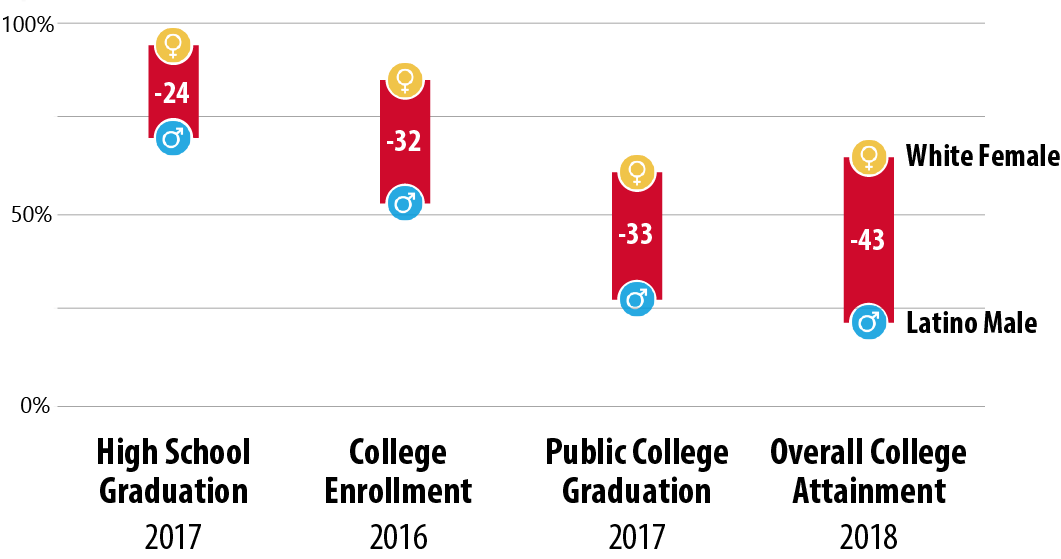
Trend data show these disparities have been persistent. Not only that, but in the case of college-going rates, the rate for Latino males is actually on the decline:
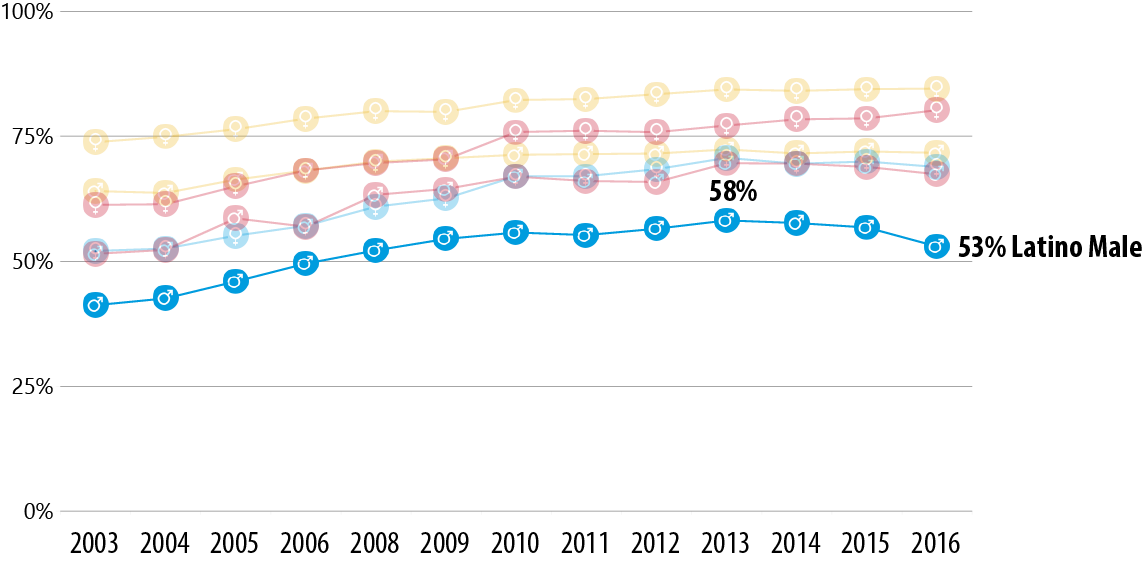
Coupled with population projections for Massachusetts, these findings give us even more cause for concern. Not only will Massachusetts be facing a decline in its youth population in the coming years, but Latinx students also represent a rapidly growing segment of this pipeline. By 2032, it is projected that nearly 1 in 4 students in the high school graduate pipeline will be Latinx:
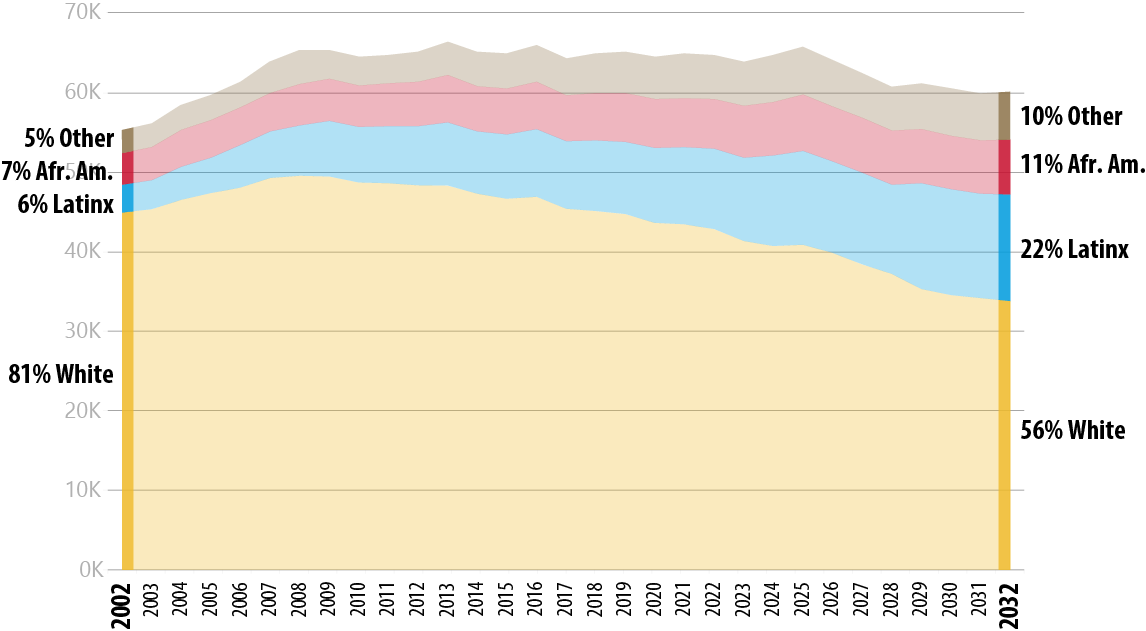
Collectively, these data point to Latino males as a potentially key target population for the equity strategic framework for Massachusetts public higher education. Future “Equity Spotlights” during the strategic planning process will focus on other disparities, such as gaps between low-income students and their higher SES peers.
This is the first in a series of four “Equity Spotlights” planned for Spring 2019. Check back in mid-March for the second installment.